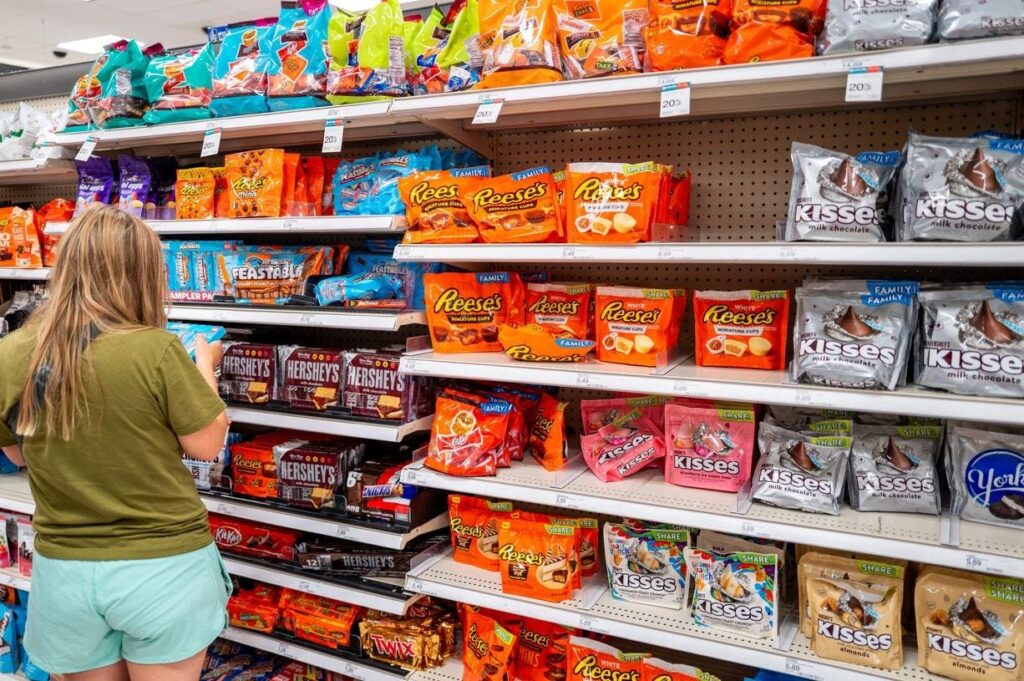Researchers tracking prices at major retailers are seeing prices trend up after tariffs, but at a relatively modest rate. The paper titled ‘Tracking the Short-Run Price Impact of U.S. Tariffs’ from researchers at Harvard and the Universidad de San Andres, tracks over 300,000 products across 4 major U.S. retailers and shows imported goods rising in prices at a faster rate than domestic products.
Specifically since early March, imported goods have seen approximately 3% price increase to June 12 when this iteration of the study concludes. That’s significantly smaller than the tariffs applied to many goods, especially since products from China made up over a third of the products sampled. That may mean that retailers and producers are shouldering more of the price impact compared to consumers. In addition, underlying product prices may represent a relatively small portion of the final price that consumers pay. Compliance with tariffs is a further complicating factor.
Reported Inflation Data Is Muted For May
Findings of low price impacts from tariffs to date would be consistent with recently reported economic data. For example, the Consumer Price Index for the month of May saw prices rise 0.1% month-on-month overall. Within that, food costs did rise 0.3% but the prices of cars and apparel, two categories where imports are significant, generally declined.
Producer Price Indexes for May also saw modest price increases. That’s notable because producer prices can be a leading indicator of prices that consumers pay in subsequent months. Although, commentary from the National Retail Federation does suggest that even though producer prices are not rising, recent substantial wholesale price deflation may be ending.
Another complicating factor is that energy prices had eased for much of 2025. This matters since energy costs impact most products to some degree whether through raw materials or transportation costs. However, with conflict between Israel and Iran, oil prices are currently spiking albeit only to levels last seen in April. If energy prices were to rise further from here, we may see incremental inflation regardless of tariffs.
What To Expect
There was an import surge ahead of tariffs that may have delayed potential price impacts as retailers rushed to stock up on products before tariffs came into effect. For example, U.S. first quarter growth was negative, primarily due to an unusually large spike in imports. Federal Reserve Governor Adriana Kugler said at a speech on June 5 in New York that, “The import surge I mentioned earlier, ahead of sharp tariff increases, has delayed the price effects associated with those tariffs, and the reversal in that surge that I expect in the next few months will likely signal larger price increases.”
This is also consistent with some larger retailers are saying that they do plan to raise prices over the coming months. However, it may also be the case that manufacturers and importers shouldering some of the tariff cost eases the price impact for retailers.
Overall, it appears likely that there are more consumer price increases to come from tariffs which have not been picked up in the economic reports yet. Certainly tariffs are adding to economic uncertainty and complicate decision-making for the Federal Reserve. Economists and the Fed will be watching data for the second half of 2025 closely. For now, markets expect the Fed to cut interest rates later in the year by a modest amount.
However, it also appears possible that tariffs may not be fully passed on to consumers. For example, tariff costs may be shared with producers and importers. In addition, techniques may be used to avoid tariff costs such as finding alternative suppliers. For now, the impact of tariffs has been less than anticipated, but that could change later in the year.
Read the full article here
















